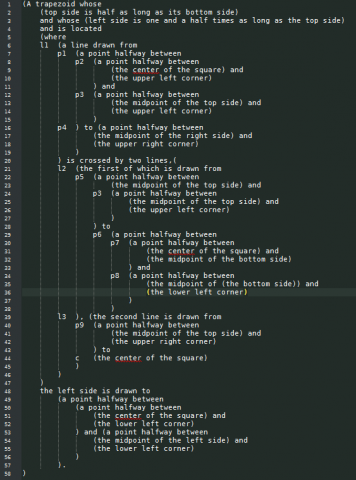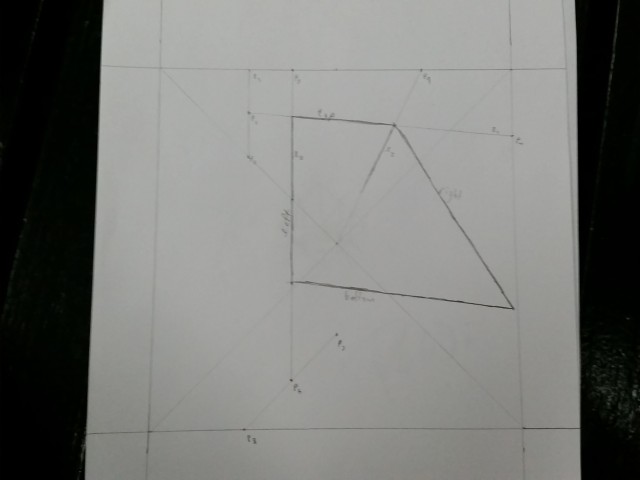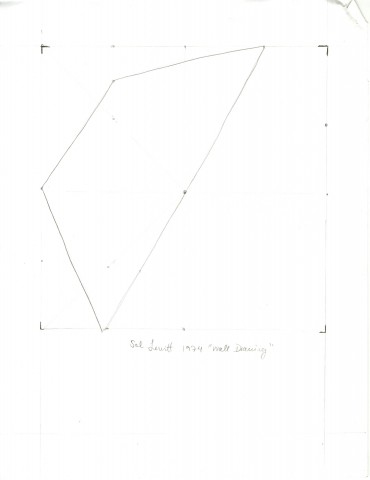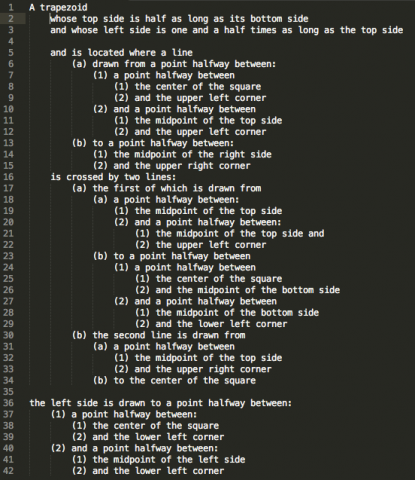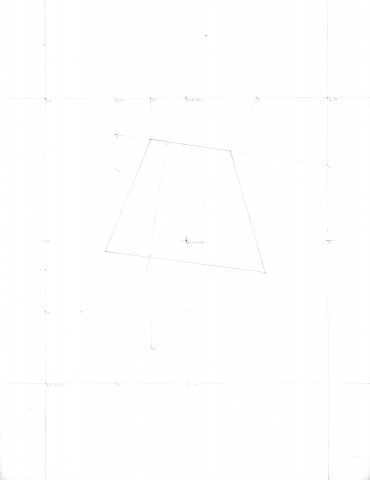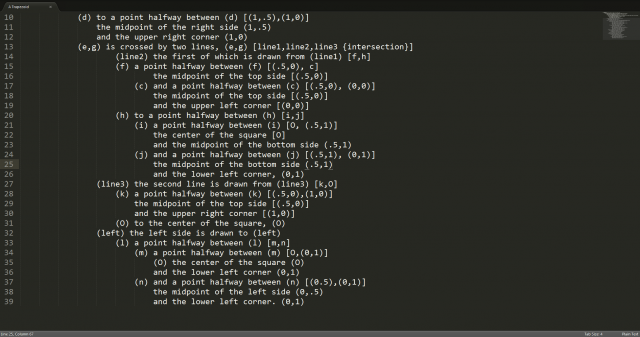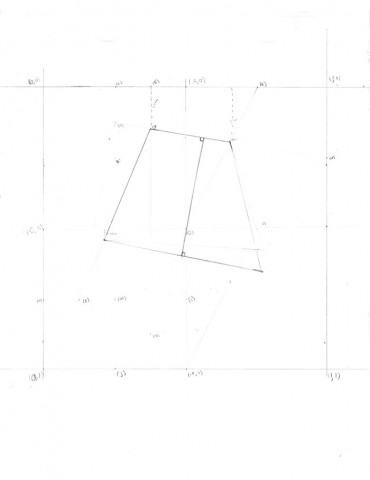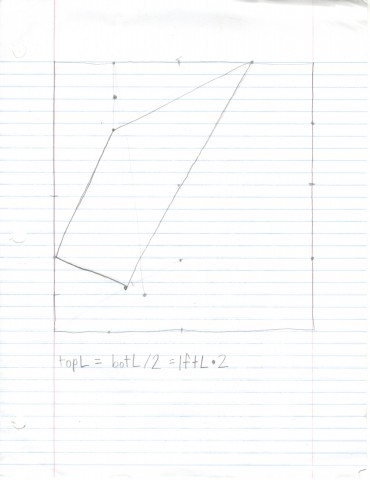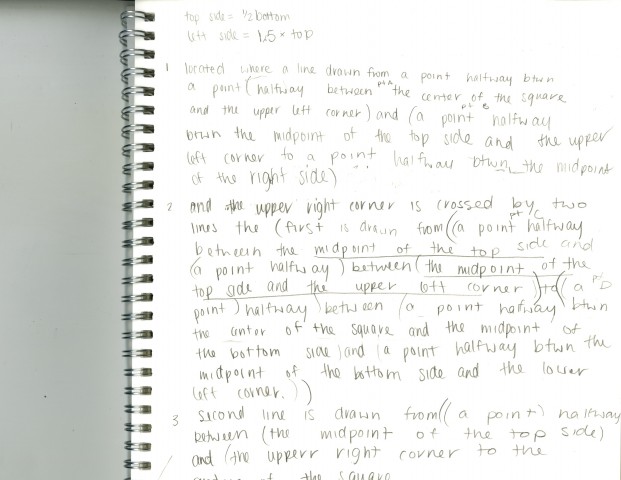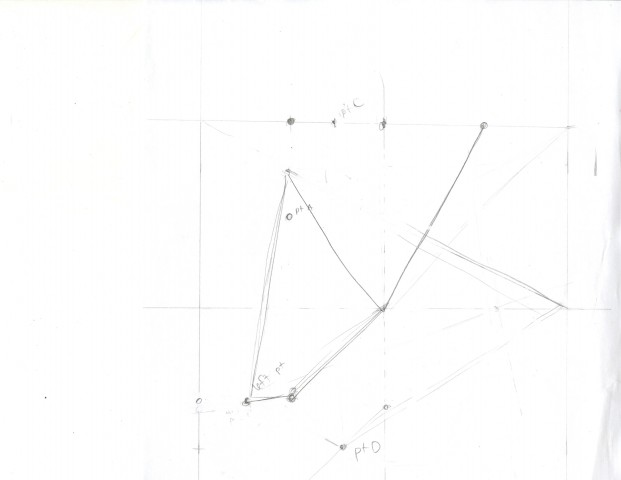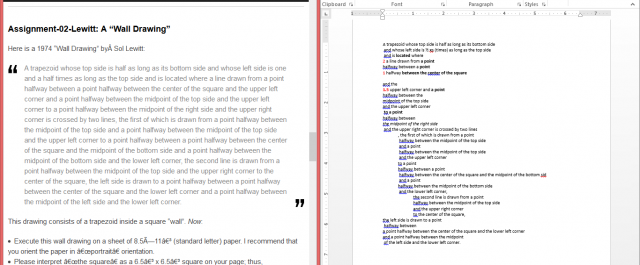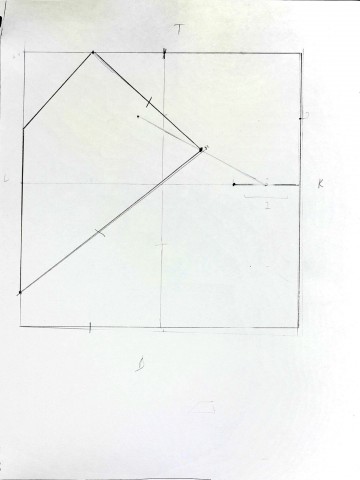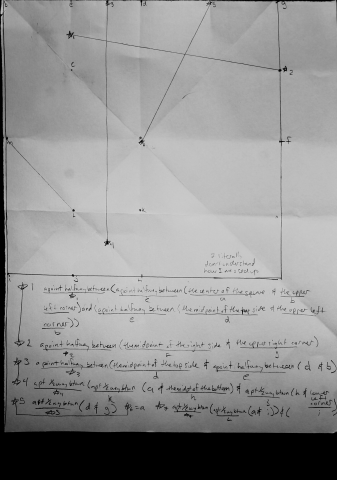My Trapezoid Interpretation
While creating my solution to Lewitt’s instructions I found that the instructions seemed to leave the drawing of the actual trapezoid open-ended. The size of the left and bottom have lengths defined relative to the top, but the perpendicular sides of the trapezoid are not defined. It is not known which side is located between the crossing of the first line with the second two. The trapezoid is also not defined to be an isosceles trapezoid. This leaves a large number and variation of solutions that should satisfy the instructions. It is possible that I misread somewhere along the line, but I feel I was fairly careful.
